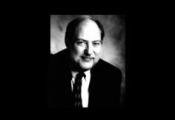A Passion for Jewish Reading Part 3
Rabbi Dov Gartenberg, 8/30/05
In the past two essays I have written about the capacity for deep reading. This is the term I learned from my friend and colleague Noam Zion of the Shalom Hartman Institute. Last year Noam taught a class in which he shared a marvelous selection from Sven Birkets, a scholar of popular culture, who wrote a book called The Gutenberg Elegies. I will share with you selections from this book with my own commentary on the nature of reading.
"What is most consicuous as we survey the general trajectory of reading across the centuries is what I think of as the gradual displacement of the vertical by the horizontal-the sacrifice of depth to lateral range, in Darnton's (a scholar in European history) terms above, ashift from intensive to extensive reading. When books are rare, hard to obtain, and expensive, the reader must compen sate through intensified focus, most like Menocchio read the same passages over andover, memorizing, inscribing the words deeply on the slate of the attention, subjecting them to an interpretive pressure not unlike what students of scripture practice upon their texts (italics mine). This is a ferocious reading-prison or 'desert island' reading-and where it does not assume depth, it creates it. "
This is what reading the Torah was and should be. The Jews are ferocious readers of the Torah. In fact, I would argue that Jews are the bearers of a culture of ferocious reading. More than anything you can say about the Jews, a characteristic of almost all Jewish cultures is a passion, near obsession about reading. One only has to review the biblical and talmudic commentary library to appreciate the bookishness of the Jews.
One way to grasp this is to reflect on why Jewish tradition insists that when we read from the Torah we must read from a Torah scroll, a revered object in every synagogue and study hall. When you think about it, why don't we just read from a bound Humash (Pentateuch) in which the Hebrew is punctuated, vocalized, and numbered. Why must we read from a scroll which very inconveniently must be rolled to different passages which are not in consecutive order? Why must public readers partially memorize passages when reading from the scroll? The laws around the preparation, writing, and public reading of the Torah scroll seek to preserve a commitment to a deep reading which Birkets speaks of. The Jewish traditions of reading from the sacred scroll survived the introduction of the printing press and all subsequent technologies because the Jews understood that the old way of reading should not die.
"Inscribing the words deeply on the slate of attention"
This striking phrase is very characteristic of Jewish reading, particularly of the Torah. The word for the Bible in Hebrew is Mikra from the word infinitive, Likro- to read. It is the Mikra-Scripture, Bible that is the object of a vertical reading. Jews assembled books of their greatest commentators and included them in the library for Jews to reflect on their own reading of Torah and Scripture. The remarkable range of commentaries on Torah enable Jews to choose different reading trajectories of the holy texts-philosophical, mystical, imaginative, analytical, psychological. But all these very different approaches to reading the same text enabled Jews to remained a unified community.
Jews brought their books to every place they wandered. Only rare instances were the Jews prevented from bringing their books with them. In a remarkable documentary called the Last Marannos, the documentarians Stan Neuman and Frederic Brenner focus on a surviving Marrano community in Portugal. The Jews valiantly held onto their traditions in secret, but they were not able to preserve their books. Outwardly Catholic they were part of a culture of enforced illiteracy where only the priests knew and taught scripture. Desperately attempting to hold onto their traditions they attempted over generations to preserve the Jewish narratives through oral memory. With chilling insight the interviewers ask the marrano residents to recount the stories they tell around their rituals. The Passover account is confusing and convoluted, yet filled with distant echoes of Jewish lore. The lingering feeling from watching the documentary is the disastrous results for Jews when they lose access to the Torah and the sources of reading.
A few years ago I was invited to give a lecture on Judaism at a prestigious private high school in Seattle. The teacher and my Jewish student who invited me to speak to the 10th grade students warned me to not assume any familiarity with the Bible despite the fact that most of the students came from very well educated families. I asked if the kids would recognize Abraham or Moses and I was told, no. The teacher commented that our kids no longer share a common text whose stories and teachings are known to all and are the subject of study and reflection.
The students of this high school are like most of us, horizontal or lateral readers. They live in a culture which offers infinite choice, but very little in a common legacy. To be Jewish is more than anything a commitment to a common reading. But beyond that to plumb the vast treasures of Judaism we must return to the ferocious reading which marked Jewish culture and religious life throughout the generations. In a generation that seeks meaning, reading in this way not only uncovers depth of meaning, the very act of reading this way, as Birkets insightfully points out, creates it.
In part 4 of this series I will continue sharing from Birkets' outstanding essay.

Subscribe to:
Post Comments (Atom)

No comments:
Post a Comment